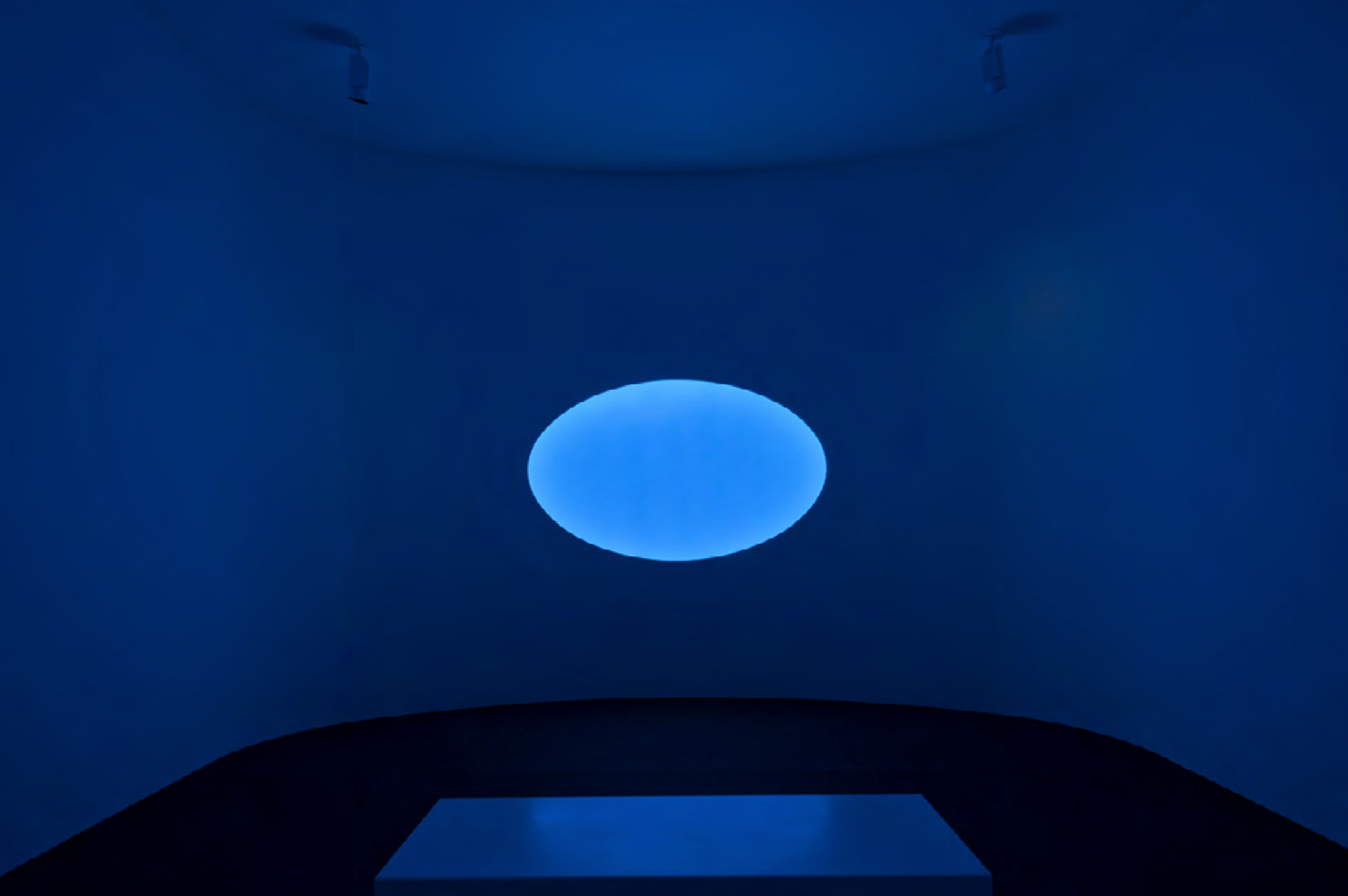
JAMES TURRELL
Confidences
October 19–December 22, 2022
4 rue de Ponthieu, Paris
Generally, light is used to reveal something about the object. I use light as the revelation itself.
—James Turrell
Gagosian is pleased to present Confidences, a pairing of two new works
by James Turrell: a large diamond-shaped work in vibrant colors (Ariel, 2022) and a medium ellipse- shaped work in blush hues (Jeu, 2022). They will be shown together within a custom-built space
at the rue de Ponthieu gallery, bringing them into dialogue with each other. The presentation will open alongside exhibitions at Gagosian’s other Paris locations of new work by Ed Ruscha (rue de Ponthieu), Jenny Saville (rue de Castiglione), and Richard Serra (Le Bourget). From October 20 to 23, Gagosian is also pleased to participate in the inaugural edition of Paris+ par Art Basel, at the Grand Palais Éphémère.
Informed by a study of perceptual psychology, Turrell has since the 1960s been exploring a variety of perceptual phenomena, ranging from sensory deprivation to intense optical effects. In 1966, he began working with light in his Ocean Park, California, studio. Early works such as Afrum-Proto (1966) and the Mendota Stoppages (1969–74), which employ planes of light in relation to architecture, became
the basis for an ongoing manipulation of the built and natural environments of which these new works are a part. Turrell continues to use light as his primary subject and material, in formally simple projects that draw attention to the limits of seeing while seeking to expand the wordless thought that they provoke. Throughout these permutations, the light that is normally used to illuminate is assigned form and structure, making it the revelation itself.
Turrell began the Glass Series, of which these new works are part, in 2001. The newest examples have been programmed using the latest LED technology, while still employing physical forms related to the artist’s Shallow Space Constructions of the late 1960s and early 1970s. In the newer series, he continues
exploring the fusion of the technological with the sensory, inducing meditative states. Each installation features planes of light that move slowly against and into one another behind an aperture to generate alternating impressions of total flatness and near-infinite depth. The combinations test our perception of space and evoke earlier painterly works by Ad Reinhardt and Mark Rothko. In Paris, Ariel, titled for the archangel of the natural world, and Jeu, named after the gnostic Books of Jeu, face off in an installation that underscores their similarities and divergences to create an immersive experience.
Roden Crater
Since the late 1970s, Turrell has worked to transform Roden Crater into a naked-eye observatory that reconceives the landscape as a multisensory experience. Located in the Painted Desert region of Northern Arizona, it is an unprecedented large-scale artwork created within a volcanic cinder cone. Representing the culmination of the artist’s lifelong research in the field of human visual and psychological perception, Roden Crater is a controlled environment for the contemplation of the light and space of the sky that harks back to the hypaethral structure created first by the Egyptians, then used by the Greeks, and seen as well in the Roman Pantheon, where sky becomes part of architecture.
Set in a stage that resonates directly with geologic time, Roden Crater connects its guests to the multitude of celestial bodies we can see from Earth and the light that reaches us from the beginning of time. While minimally invasive to the external natural landscape, internally the red and black cinder is being transformed into engineered spaces where a series of aligned tunnels, portals, and apertures open onto pristine skies, capturing light directly from the sun in daylight hours, and the planets and stars at night. Guests can experience the isolated and intensified light from celestial objects within spaces, and the celestial objects themselves when looking without.
As construction on Roden Crater is ongoing, it is presently closed to the public. Fundraising is underway to complete the construction and open Roden Crater to the public.
James Turrell was born in 1943 in Los Angeles and lives and works in Flagstaff, Arizona. Collections include the Tate Modern, London; Solomon R. Guggenheim Museum, New York; Los Angeles County Museum of Art; and Israel Museum, Jerusalem. The James Turrell Museum opened
in Colomé, Argentina, in 2009. Solo exhibitions include Stedlijk Museum Amsterdam (1976); Whitney Museum of American Art, New York (1980); Israel Museum, Jerusalem (1982); Museum of Contemporary Art, Los Angeles (1984); Museum für angewandte kunst, Vienna (1998–99); Mattress Factory, Pittsburgh (2002–03); The Wolfsburg Project, Kunstmuseum Wolfsburg, Germany (2009– 10); National Gallery of Australia, Canberra (2014–15). A retrospective opened at the Solomon R. Guggenheim Museum, New York, in 2012, traveling to the Los Angeles County Museum of Art and Museum of Fine Arts, Houston, among other venues. Turrell is the recipient of several prestigious awards, including the MacArthur Foundation Fellowship (1984) and National Medal of Arts (2013).
in case you missed…



